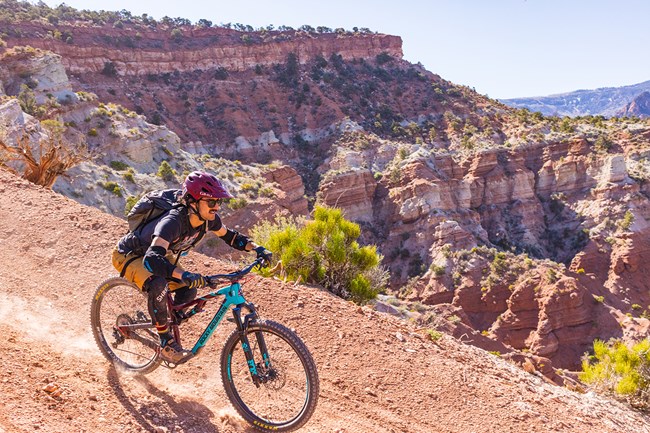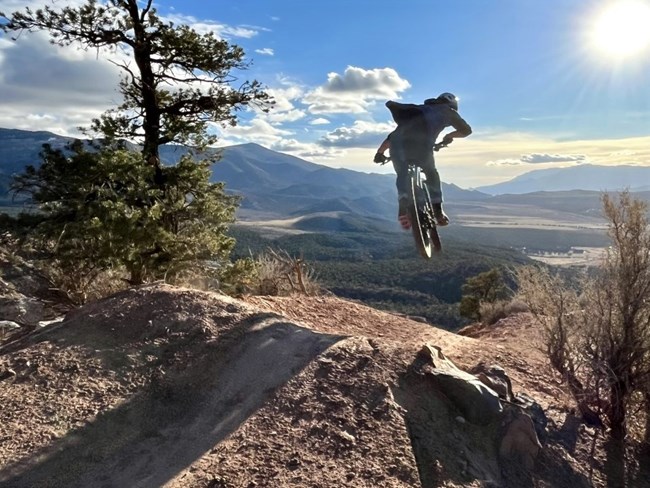Last updated: July 13, 2023
Article
Iron Hills Trail System

Liz Chrisman
Nestled in Color Country between Zion National Park and Bryce Canyon National Park lies the 29 miles of trails that make up the Iron Hills Trail System. The Iron Hills Trail System welcomes non-motorized users of all kinds on its network of paved paths. Not only is the system a premier bike destination, but the trails are also open to hikers, trail runners, wildlife viewers, and even include four miles of trails designated for equestrian use.
The trail system was built with every user in mind. Not only is there something for all cycling abilities, but there was so much intention put into building the system that bikers of different experience levels can ride the same trail while all enjoying the experience. The intention behind the trail system has promoted family and multi-generational use of the trails, adding to the inclusive environment.
Not only are the trails accessible for any riding level, but they are also beautiful and have many amenities. The location of the system in southwest Utah provides riders, runners, and hikers with constantly changing terrain types. The fall leaves at over 8,000ft, pinyon-juniper forests, red rock cliffs, and ancient lava fields are just some of the natural splendor visitors can experience in a single trip.

Sam Hodges
With amenities such as access to a 13-site ride-in or drive-in campground, a natural and constructed feature skills track, bathrooms, running water and flush toilets, and outdoor changing station, and two bike repair stands, visitors to the Iron Hills Trail System should feel confident they have everything they need.
The development of the trails system was achieved through a large collaborative effort that included much of the community. The entire system runs through Bureau of Land Management (BLM) land and is managed by BLM and several local and regional partners. This collaborative partnership has served as a model for communities and agencies to follow in similar situations.
